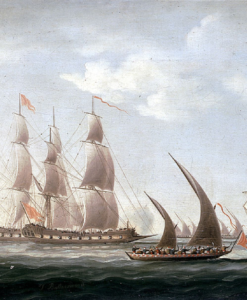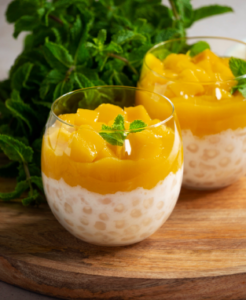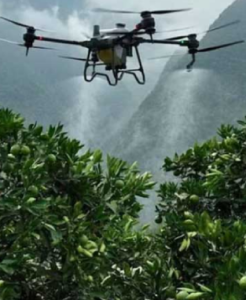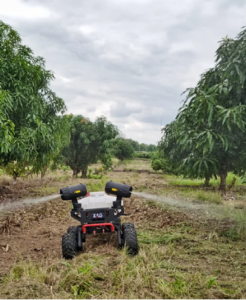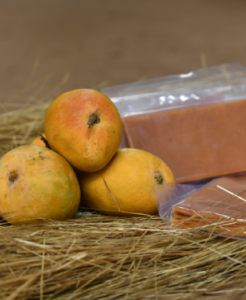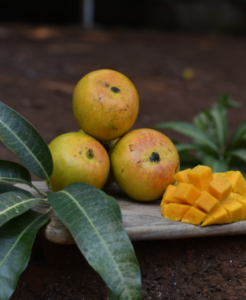Different Varieties of Indian Mangoes You should know About!
Couple of weeks later of winter, Indian Mango trees will start to receive their seasonal bloom, protruding greenish little buds from the tendered pinkish leaves. As the winter progresses these buds becomes flowers with tiny Indian Mangoes around. Hard to believe but every single flower has thousands of tiny Indian Mango fruits. And to one’s surprise, over the period towards the maturity of fruit, only bunch of 5 to 6 of fully-grown Indian Mangoes will be yielded for harvest.
This flowering takes farmers for tasks and most of his efforts are into saving these tiny little fruits hanging through the flowers. The choice of pesticides to avoid any attacks of insects lies with the type of attack and cycle of flowering, life of tree etc. Many and multiple factors are taken into consideration and farmers are vary cautious before spraying any pesticides. Alternate methods like insect traps and some special herbs smoke around trees is a good idea to keep insects away once fruit is near maturity.
Alphonso Mango (Hapus Mango)
The Alphonso mango (Hapus Mango) is a seasonal fruit harvested from mid-Feb through the end of June. The time from flowering to harvest is about 90 to 120 days, while the time from harvest to ripening is about 4 to 15 days. The fruits generally weigh between 135 and 425 grams.
The Alphonso is prized in domestic and international markets for its taste, fragrance and vibrant colour. It is exported to various countries, including Japan, Korea and Europe.
Alphonso Mango perhaps the most famous mango type . The poster boy for mangoes, ripening to a perfect golden with just the right amount of firmness to allow you to bite right into a slice.
States: Maharashtra, Gujarat, Karnataka and Madhya Pradesh.
Banganapalli Mango
It alone occupies 70% percent of total mango cultivable area of the Andhra Pradesh state and was first introduced by the Farmers of Banaganapalli. It was registered as one of the geographical indication from Andhra Pradesh on 3 May 2017.
The fruit is described as obliquely oval in shape, around 20cm in length, with yellow flesh and a thin, smooth yellow skin.
The Banganapalli Mango has sometimes been called the more economical – though equally flavoursome – cousin of the alphonso. This large, oblong-shaped mango takes its name from a town in Andhra Pradesh. It can be used in a variety of ways, from pickles to gravies to ras (juice).
States: Andhra Pradesh
Bombay Green Mango (Saroli)
The saroli is a green, medium-sized mango, found in the Sindh belt. It is oblong in shape and usually available in the early stages of the season, but doesn’t last for very long.
States: Uttar Pradesh and Haryana.
Chausa Mango
The chaunsa Mango variety of mango was made popular by the Indian invader Sher Shah Suri while commemorating his victory over Humayun at Chausa, Bihar. Suri ultimately named his favorite mango “chaunsa” to honor his victory. The mango was also known as the Ghazipuriya mango due to its early large-scale cultivation in Ghazipur.
This mango is found in the belt stretching across Uttar Pradesh, , However, the sweetest of these mangoes comes from Pakistan and is often exported around the world, much like alphonsos are.. Chausas, with their bright yellow skin and sweet pulp, are available towards the end of the mango season (July-August), when most other varieties are over for the year.
States: Bihar, Haryana, Himachal Pradesh, Punjab, Rajasthan and Uttar Pradesh.
Dasheri Mango
In the 18th century, the Dasheri Mango first appeared in the gardens of the Nawab of Lucknow. Since then Dasheri plants have been produced and planted throughout India. People from the village of Dasheri near Kakori, Uttar Pradesh, have the mother plant.
The mango belt of Malihabad, about 30km from Lucknow, is home to the famous dasheri mangoes. This sweet, aromatic, medium-sized mango was granted a Geographic Indication (GI) registration in 2009, signifying that its trademark shape and taste are due to its geographic origins. The fibreless mango is slightly long in shape, with a greenish-yellow colour and a sweet taste.
States: Uttar Pradesh, Haryana and Punjab.
Himsagar Mango
Widely considered as the best mango, the inside of Himsagar Mango is yellow to orange in colour and does not have any fibre. The fruit is medium-sized and weighs between 250 and 350 grams, out of which the pulp content is around 77%.
Himsagar Mango ripens in May and it is available in the market from the second week of May to the end of June. It is mainly grown in the Chapai Nawabganj district of Bangladesh and the Malda, Murshidabad, Nadia, Hooghly districts of West Bengal, India.
When the people responsible for some of the best desserts (Bengalis, in case you were wondering) in the country vouch for the himsagar Mango as the best mango around, you’d be wise to pay them some heed.
States: West Bengal and Bihar.
Hamam Pasand Mango
Hamam Mango have a notably soft skin, easy to bite through or even eat, and this also makes it hard to transport. Modern retail systems seem to be cracking how to acquire and distribute them carefully enough and this combined with a wider cultivation area has resulted in increased availability at retail stores.
The origin of the prized variety’s Hindi name is lost in the mists of time. Some say it was originally grown in Kerala and beloved of Mughal emperor Humayun (and was locally called Humayun Pasand). This fruit known as Himayat in Andhra was supposedly introduced in Tamil Nadu by the family that owns the Thathachariar gardens, a sprawling estate at Srirangam, Tiruchirappalli.
This regally-named mango comes from the south, from Tiruchirapalli in Tamil Nadu more specifically, although it was brought to the state from Andhra Pradesh. This variety doesn’t stay long – it is available only during the months of May and June.
States: Tamil Nadu, Andhra Pradesh, Telangana.
Kesar Mango
The variety gets its name, which means “saffron”, from its colour and rich fragrance. This mango isn’t made to be cut. You have to either make it a little hole at the top and suck out its creamy contents while getting delicious pulp all over your hands and chin. Or if you’d like to be an adult about it, use this to make purees, milkshakes and the like.
The Kesar mango is grown in an approximate area of 18000 hectare in the districts of Junagadh and Amreli in the Saurashtra region of Gujarat, with an estimated annual production of 1 lakh tonnes.
State: Gujarat.
Kishan Bhog Mango
This medium-sized variant is found in West Bengal’s Murshidabad district. It is mostly round in shape, with a sweet taste thanks to its fleshy tissue. It is available between May and July.
State: West Bengal.
Langra Mango
This Mango is Oval in shape, quite aromatic, green in colour and irresistibly delicious, Langra Aam is available from May to August. The bright yellow flesh has less fiber and is super juicy.
A mango that makes many North Indians go weak in the knees is the langra (pronounced “laen-gra”). It takes its name from the Hindi word for “lame” because according to legend, it first appeared in the orchard of a lame man in Varanasi.
States: Uttar Pradesh, Bihar, Haryana, Madhya Pradesh, Odisha, West Bengal and Punjab.
Mankurad and Fernandina Mango
Among all the mangoes, Mankurad, also known as Goa Mankur, Kurad, Malcorado, Corado etc, is the most popular variety that is available throughout Goa. It has a long history of cultivation and is known exclusively as a table fruit. The Portuguese named it Malcorado meaning poor coloured and in time this word transformed to “Mankurad”.
Mankurads are usually available mid-season. Ideally this small-to-medium-sized mango should be less fibrous and have just the right balance of sweet and acidic flavours.
State: Goa.
Neelam Mango
They are smooth-skinned and bright yellow upon ripening and have no blush. The flesh is deep yellow or orange. There is no fiber and a rich, aromatic flavor .
Neelam is a variety of tiny mangoes that fits in your fist and arrives with the monsoon. These mangoes are known to have a vibrant yellow-to-orange flesh, with a smooth skin and almost no fibres.
States: Tamil Nadu, Karnataka and Odisha.
Payri Mango
We are fortunate to have tree 90 years old tree. These medium-to-large aromatic mangoes, with their deep yellow, mottled skins, are not meant to be cut. Like Gujarat’s kesar variety, payris are eaten by rolling it around in your palms a bit, to soften the insides. The payri is often used to make aamras and milkshakes.
States: Gujarat and Maharashtra.
Totapuri Mango
Totapuri mango skin lacks the usual bitter taste of most mango skins or has a very slight bitterness and is consumed with the flesh traditionally.
The totapuri gets its name from the fruit’s hooked tip, which resembles a parrot’s beak . As its affordable price for processing industry unlike alphonso mango all juice processing industry prefers totapuri to make drinks like Maaza and Minute Maid.
States: Andhra Pradesh, Telangana, Karnataka, and Tamil Nadu




